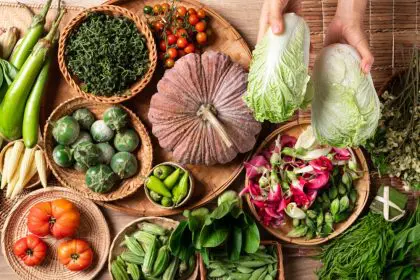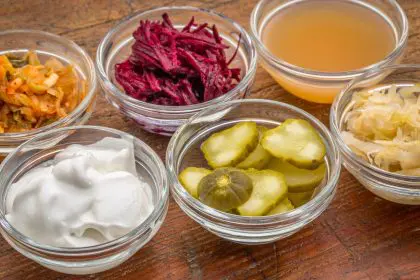You’ve probably been told carbs are the enemy if you’re trying to lose weight. We’ve all heard it – cut carbs, drop pounds, simple as that. But what if I told you there’s a type of carb that might actually help you shed those stubborn pounds? Enter resistant starch, the carb that defies everything you thought you knew about weight loss.
Unlike its carb cousins that break down into glucose and spike your blood sugar faster than you can say “food coma,” resistant starch plays by different rules. It’s the rebel of the carbohydrate world, and your waistline might just thank you for getting acquainted.
What makes resistant starch so special
Let’s get one thing straight – resistant starch isn’t some fancy ingredient that requires a special trip to an overpriced health food store. It’s already hiding in foods you probably have in your kitchen right now.
Resistant starch earned its name because it resists digestion in the small intestine. Instead of being broken down like regular starch, it travels intact to your large intestine. There, it becomes food for your gut bacteria, which ferment it and create compounds that can help with weight management.
Think of it as a VIP pass that lets this special carb bypass the usual digestion highway and head straight to where it can do the most good.
The gut connection you never saw coming
Your gut is home to trillions of bacteria that influence everything from your mood to your weight. When these bacteria feast on resistant starch, they produce short-chain fatty acids like butyrate. This isn’t just random digestive chemistry – it’s a weight loss strategy your body designed all on its own.
These fatty acids help reduce inflammation, improve insulin sensitivity, and even signal your body to burn fat instead of storing it. It’s like having a personal trainer living in your gut, pushing you toward your weight loss goals without you having to lift a finger.
Plus, a happier gut means fewer digestive issues like bloating and gas – and who doesn’t want a flatter stomach without having to do a single crunch?
The fullness factor that changes everything
Ever eaten a huge plate of pasta only to feel hungry again an hour later? That’s because many refined carbs are like one-night stands with your appetite – briefly satisfying but ultimately leaving you wanting more.
Resistant starch, however, is in it for the long haul. Foods rich in resistant starch slow down digestion and help you feel full longer. This isn’t about willpower or mind games – it’s simple biology. When you’re legitimately satisfied after eating, you naturally eat less throughout the day.
In fact, some research suggests that simply adding resistant starch to your breakfast can reduce hunger and decrease calorie intake at lunch. It’s like having a built-in portion control system that doesn’t require measuring cups or food scales.
The metabolism boost that seems too good to be true
Here’s where resistant starch really shines. Many weight loss strategies end up slowing your metabolism – the exact opposite of what you want. But resistant starch seems to give your metabolism a gentle nudge in the right direction.
By improving insulin sensitivity, resistant starch helps your body burn fat more efficiently. Think of insulin as the doorman deciding whether calories go into fat storage or get burned for energy. Resistant starch helps ensure more calories get shown to the “burn for energy” door.
Even more impressive, resistant starch can increase fat oxidation – the process where stored fat gets broken down and used for energy. This means your body might preferentially burn fat over carbohydrates, especially the stubborn fat around your midsection that seems immune to diets and exercise.
Surprising foods that pack a resistant starch punch
Ready to add this superstar carb to your diet? The good news is you don’t need exotic ingredients or complicated recipes. Resistant starch is hiding in plain sight in many everyday foods.
Green bananas might not taste as sweet as their yellow counterparts, but they contain up to three times more resistant starch. As bananas ripen, the resistant starch converts to regular starch, so those slightly unripe ones with a hint of green are perfect.
Cold potato salad isn’t just a summer picnic staple – it’s a resistant starch goldmine. When you cook and then cool starchy foods like potatoes, pasta, and rice, some of the digestible starch converts to resistant starch through a process called retrogradation. It’s like the food equivalent of a superhero transformation.
Beans and legumes deserve their reputation as nutritional powerhouses. They naturally contain high amounts of resistant starch along with protein and fiber – a trifecta for weight management. Black beans, chickpeas, and lentils are particularly good choices.
Oats have long been celebrated for their heart-healthy benefits, but they’re also an excellent source of resistant starch, especially when eaten raw or cooked and then cooled. Overnight oats aren’t just trendy – they’re a weight-loss friendly breakfast option.
How to maximize the benefits without overthinking it
Adding resistant starch to your diet doesn’t require a complete nutritional overhaul or special meal plan. Start by making simple swaps like trading your regular rice for cooled rice in salads and stir-fries. Prepare a batch, refrigerate it overnight, and use it throughout the week.
Slightly underripe bananas make perfect additions to smoothies without the blood sugar spike of fully ripened ones. The slight starchiness gets masked by other ingredients, so you won’t even notice the difference in taste.
Replace traditional pasta salad with a bean-based version for a resistant starch upgrade that also packs more protein and fiber. Your body will thank you, and your taste buds won’t know the difference.
The balanced approach that actually works
Like most things in nutrition, moderation is key. You don’t need to load up on resistant starch at every meal to see benefits. Aim for adding one resistant starch food to your day and build from there.
Remember that resistant starch works best as part of a balanced diet that includes plenty of vegetables, lean proteins, and healthy fats. It’s not a miracle cure, but rather a useful tool in your weight management toolkit.
And perhaps the best part? Unlike many “diet foods” that leave you feeling deprived, resistant starch foods are satisfying and delicious. They’re foods you’ll actually want to eat, which makes this one of the most sustainable approaches to weight management.
In a world of complicated diet rules and restrictions, resistant starch offers a refreshingly simple strategy – eat real, minimally processed foods that happen to contain a special type of carb that works with your body, not against it. No deprivation required, just smart choices that might finally help you win the weight loss battle once and for all.












